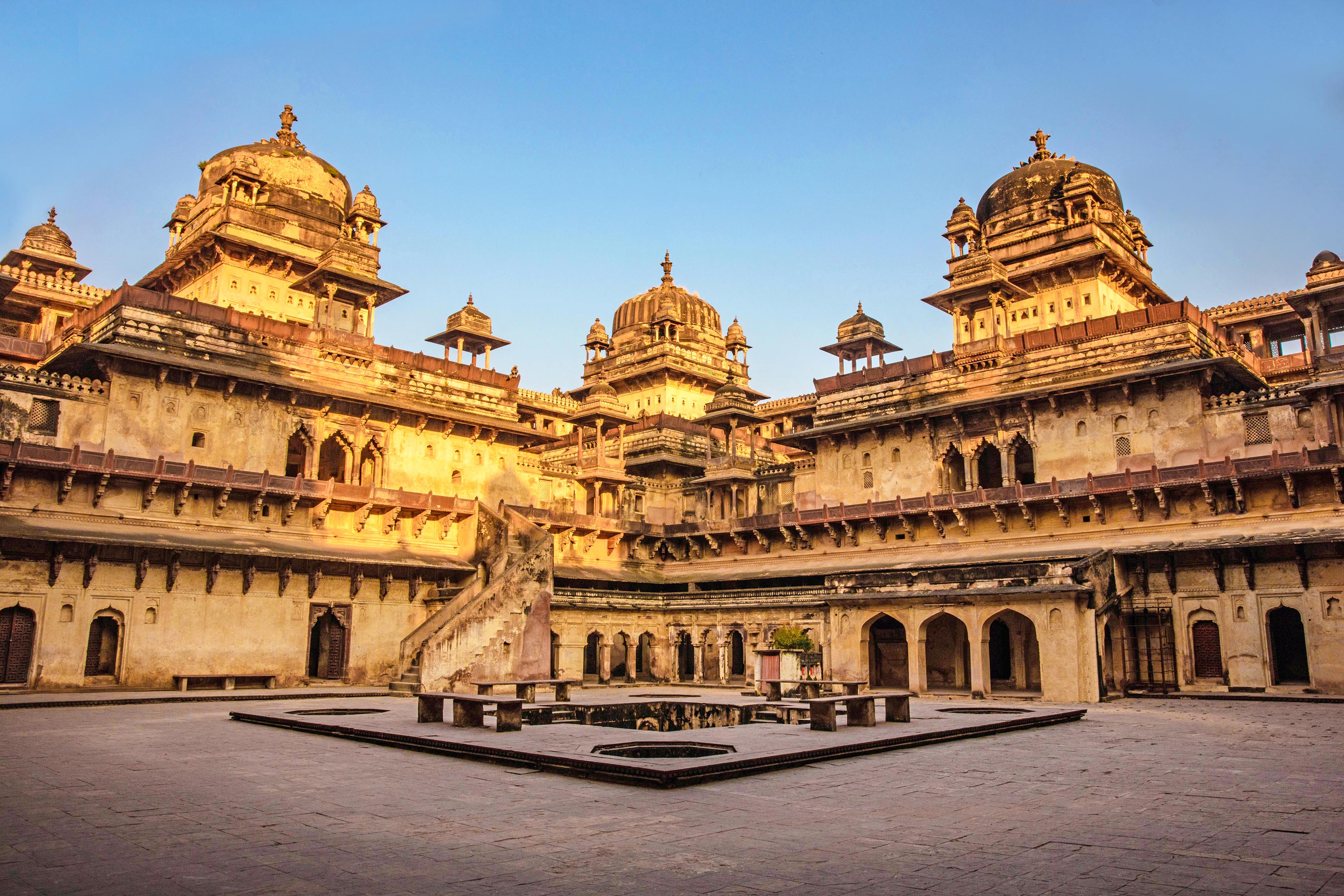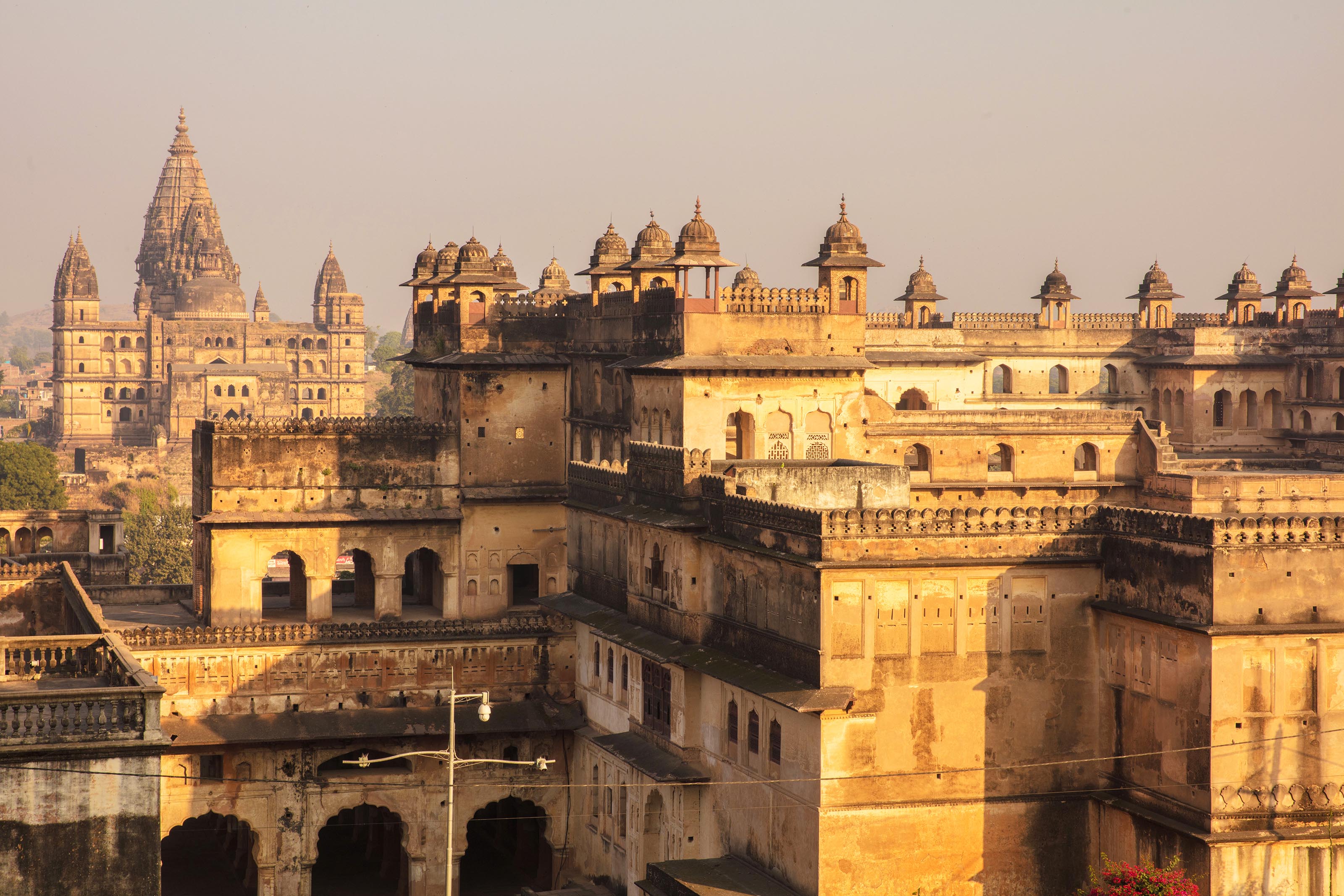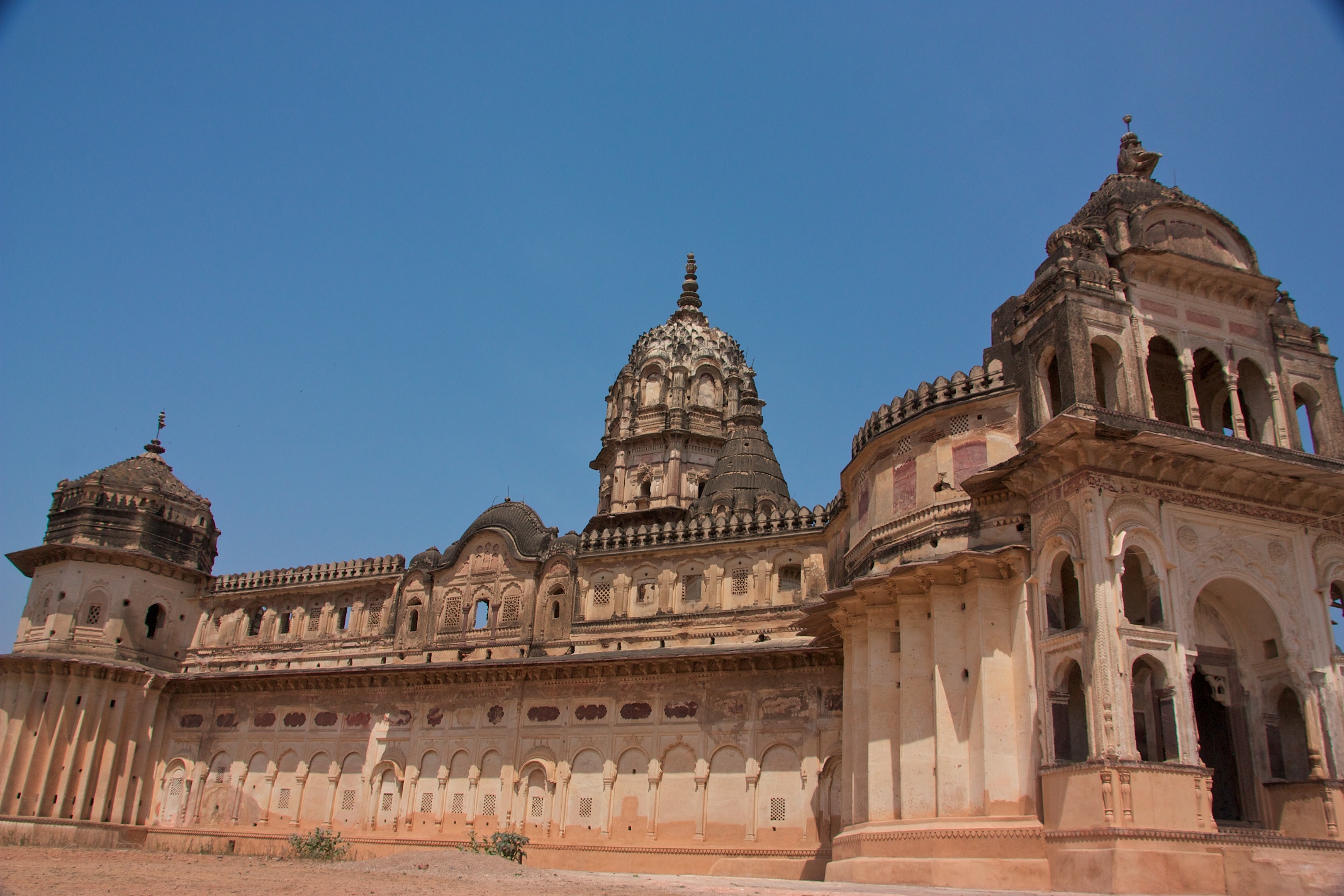WELCOME TO
ORCHHA
Step in to an oasis of claim at the stunning riverside resort of Orchha Place & Convention Center.This luxurious property is located in the heart of the ancient city of Orchha. which is dotted with the ruins of historic places, forts and temples.
The property is spread across 12 acres offering guests and elegant interplay of rich legacy with contemporary luxury. The rooms are tastefully fitted with regional-inspired designs and plush furnishings.
All modern amenities with personalized services and experienced staff guarantee a stay that’s as distinctive as it is restorative, ideal for both leisure and business guests.
Take a dip in the beautifully landscaped swimming pool. Break a sweat at the gym or at a yoga session, or indulge in therapeutic spa treatments with soothing massages and steam baths. For food, choose from two on-site restaurants serving delectable multi-cuisine fare, while the lounge bar is the perfect place to unwind with a drink.
A fully functional board room with conference facilities caters to all corporate meeting and training needs, and three theatre-style conference rooms adjoining verdant manicured lawns are ideal for either intimate or large destinations weddings and other social events.
The sprawling grounds are great for bird-watching and other activities for children and adults to enjoy, while Orchha city itself is easy to explore via e-rickshaws, cycling, and trekking to soak in the vibrant local charm and rich history and architecture.

JEHANGIR MAHAL
Built in honour of the Mughal emperor Jahangir on his first visit to Orchha in the 17th century, the Jahangir Mahal is a multi-storied architectural spectacle built in an Indo-Islamic style. Its hanging balconies, pavilions, and over 100 chambers offer expansive views of the city. The entrance, facing east, is a turquoise-tiled marvel, while two stone elephants bearing bells still stand sentry at the imposing stairway, to have announced the king’s arrival.
RAJA MAHAL
Part of the Orchha Fort Complex, along with Jahangir Mahal and Sheesh Mahal, the Raja Mahal was the royal residential palace of the kings and queens. The palace features elaborate, decorative mural paintings on the walls and ceilings of gods and mythical creatures. The palace is designed with latticed stone windows and arcade passageways that allow beautiful vantage views of the other famous city sights.


CHATTRIS
14 chattris or cenotaphs were constructed beside the Betwa river. This group of imposing monuments were dedicated to the erstwhile rulers of the mighty Bundelkhand dynasty, and served as memorials for the dead. The varying size of each chattri was supposedly a direct reference to how long each corresponding king ruled. But big or small, in the setting sun, they are all a sight to behold.
LAXMI NARAYAN TEMPLE
Constructed in 1662 in ode to Goddess Laxmi (the Hindu Goddess of wealth and prosperity), the Laxmi Narayan Temple is unique for not housing an actual idol of the goddess inside. It is a unique architectural blend of both temple and fort – a style popular of that time. Elaborate and exquisite murals and frescos with mythological themes on the walls and ceilings are a must-see. A paved pathway connects this temple with the Ram Raja Temple.


RAM RAJA MANDIR
Another unique Orchha temple is the Ram Raja Mandir. Initially built as a palace for a queen, it was converted into a temple when a temporary idol of Lord Rama placed inside, which the queen ardently worshipped, refused to budge. This shrine is the only one in which the deity is worshipped as a king. Even today, the Lord Rama idol gets a guard of honour and a gun salute. Thousands of devotees and pilgrims throng the Ram Raja Mandir.
CHATURBHUJ TEMPLE
Chaturbhuj means “one with four arms” and thus the Chaturbug Temple is built in dedication to the four-armed Lord Vishnu. It was originally built to house the idol of Lord Rama, but this idol eventually refused to budge from the queen’s palace, which became known as the Rama Raj Temple. So the Chaturbhuj temple was instead converted into a Vishnu shrine. The architecture is a mix of temple, fort and palace – tall spires, large central tower, and fortifications. There are religious symbols like the lotus carved across the shrine.




